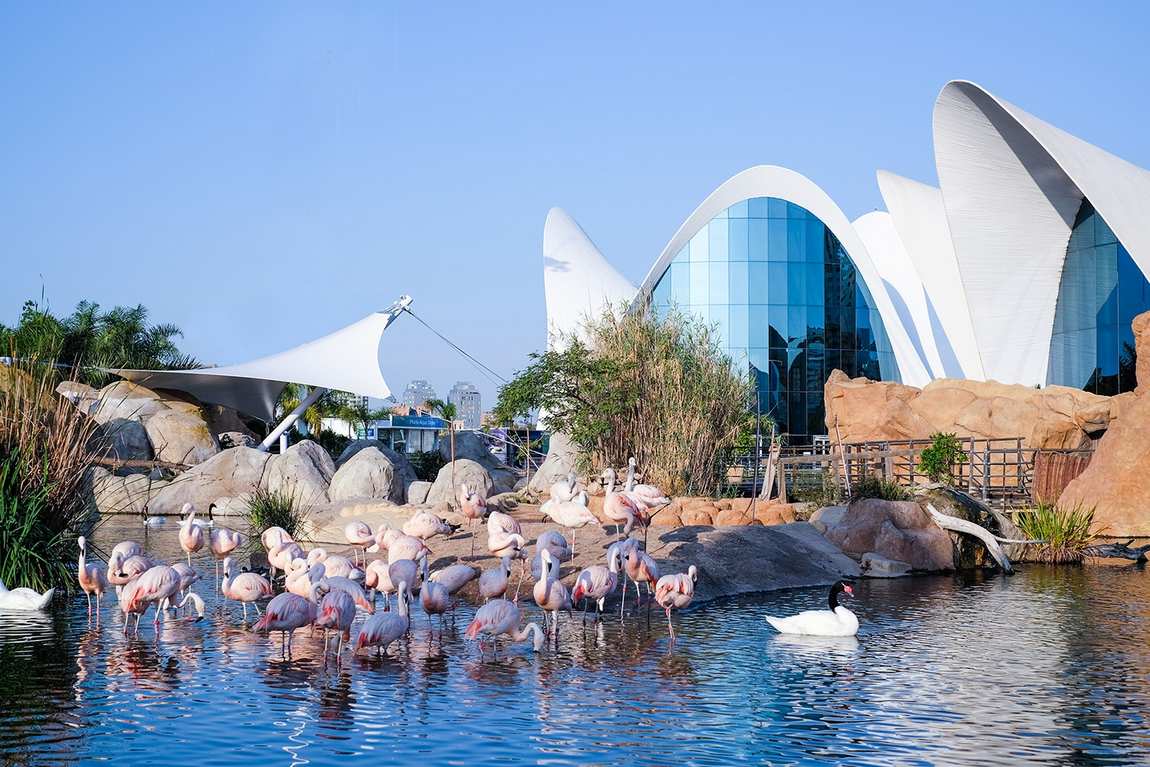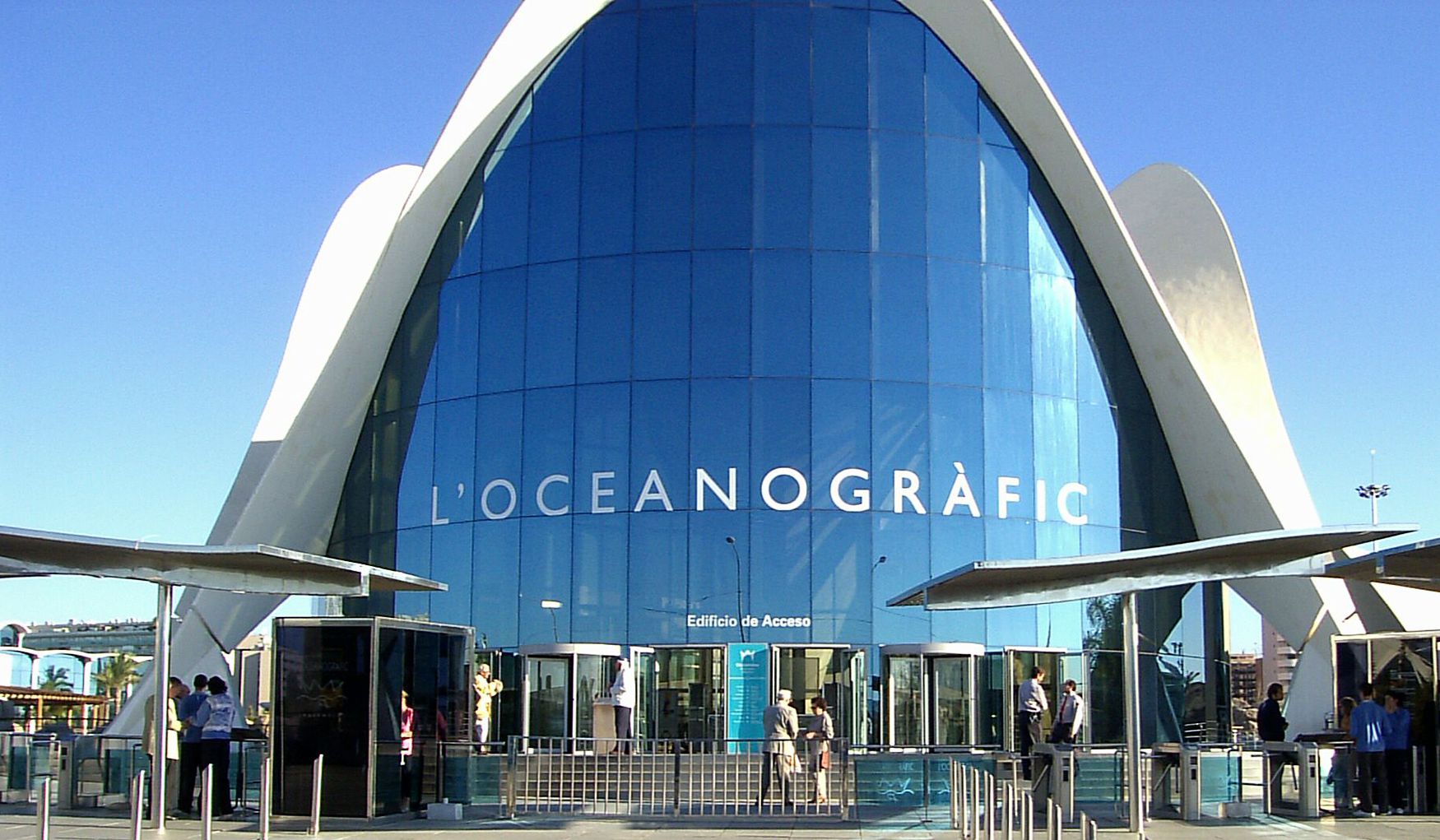The accumulation of buildings, reminiscent of a Martian spaceport or a museum of giant fossils, attracts all tourists. That is the City of Arts and Sciences — the main attraction of Valencia for families with children. One of the objects of the City, where curious children can spend more than one hour, is the Oceanographic Park of Valencia.
What is Oceanogràfic?

It is the largest aquarium in Europe, housing around 45,000 representatives of the fauna of the seas and oceans. Who lives in the Mediterranean Sea? Who isn't frightened by the cold water of the Arctic Ocean? Who lives well in a swamp? You'll find the answer to many children's questions at Oceanogràfic Valencia.
The oceanarium has replicated the most important aquatic ecosystems of the Earth. You can peek into the small Mediterranean Sea, imagine sail through tropical seas and dive into the icy waters near the poles, imagine yourself as divers in the Red Sea, dive into the ocean depths, relax on rocky islands, and consider the inhabitants of rivers and swamps. All these exhibits cover an area of 110,000 square metres, and 42 million litres of water were used to set up the aquariums. Each ecosystem is set up in a separate building.
Is Oceanogràfic Valencia worth visiting?
A stroll along the paths of the underwater kingdom is always surprising: dull blue-green light, rocky blocks and sea stars competing with them in immobility, restless actinia and impassive fish swimming somewhere in the water column. The entrance to the underwater world is amidst the coral reefs that characterise the Indian and Pacific Oceans. A 70-metre tunnel leads from here, with temperate sea creatures swimming through the glass. Check out the tough-looking swordtails (and shell), the musical guitarfish and the largest of the morays, a fish with a serpentine body of bright green.
The tunnel takes you on a tour of the seabed off the Japanese islands, home to starfish and giant spider crabs. And then... next, you'll see birds. Wading birds, cranes, egrets and ibises are integral to aquatic ecosystems. And what other wildlife can you find in rivers or mangrove swamps? The Valencia Oceanarium also answers that question.
The next part of the tour is the fauna of the Mediterranean Sea. Here all visitors are attracted by the cuttlefish, a clever mollusc that can cast fog (or ink) and confuse pursuers. You can also stand on the spot where the waves crash against a rock by setting up a special acrylic bell. A similar experiment is also offered at the Barcelona Aquarium.
Next, you'll visit the islands where sea lions roost. From there, you move on to an aquarium where the roomy Red Sea, its motley fish, and poisonous sea urchins splash about. Then it's on to Antarctica, home to elegant and charming penguins. Then travel through a tunnel symbolising the Earth's axis to the Arctic with walruses and adorable beluga whales. The ability of these whales to make loud noises is a proverb; only it mistakenly mentions another fish, the beluga. Will you be lucky enough to hear a beluga whale roar?
The only part of the exposition where underwater twilight does not reign is the dolphinarium, which has also retained its position as the largest dolphinarium in Europe. A dozen dolphins perform in a vast pool at once, and here they can show themselves in all their glory. Everything is amazing: a well-staged show with musical accompaniment, complex tricks, numerous talents of animals, and mutual understanding between dolphins and trainers.
In total, more than 500 species of marine life live in the Valencia Aquarium, each of which is interesting. If you want to learn more about the fauna of the depths, you can use the audio guide or join the excursion. In addition, exhibits depicting the body structure of various marine animals, from turtles to sharks, will help satisfy the interest of young zoologists.
Services
It should be noted that it is very convenient to move around with prams throughout the territory of the Oceanarium in Valencia. Therefore, visit all corners of this giant aquarium, including a restaurant overlooking the sea depths and a souvenir shop where it is easy to choose a gift reminder of an exciting excursion. At the end of your visit, you can plan what to see in Valencia without leaving the City of Arts and Sciences. Among its facilities, children really like the Science Museum and the Hemisfèric 3D Cinema.











